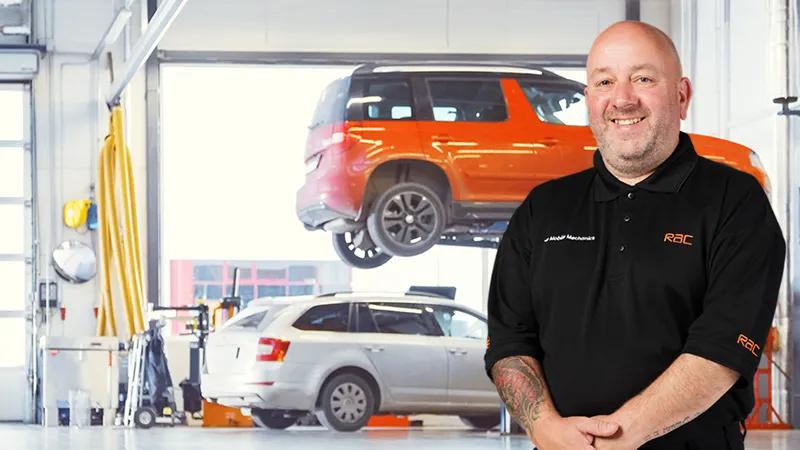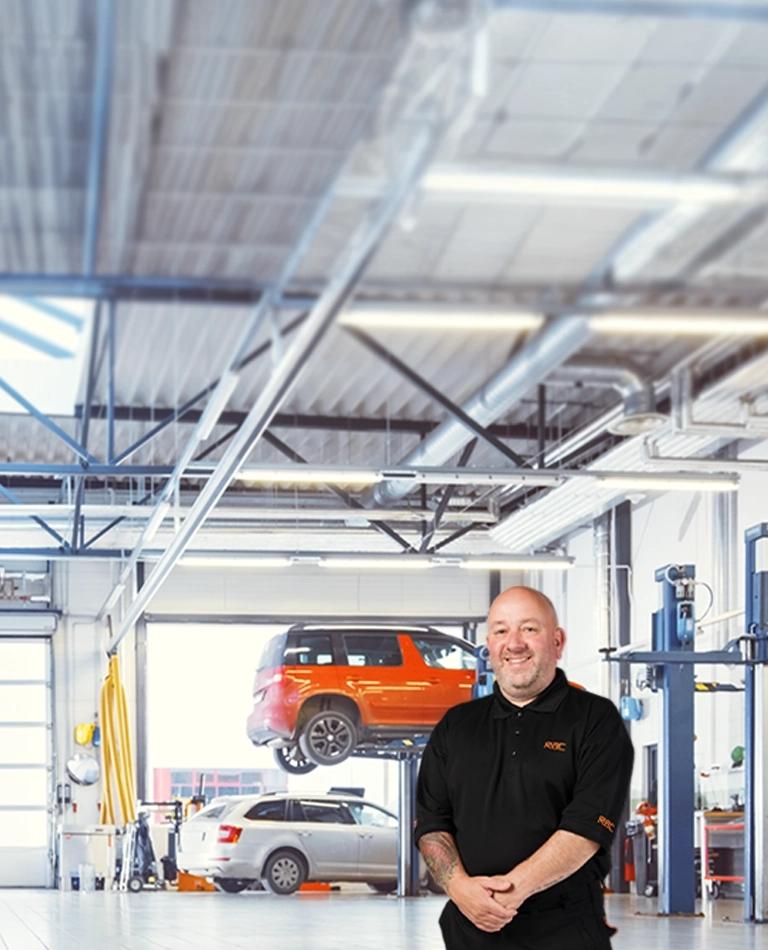
Book a wheel alignment
If your vehicle pulls to one side or your tyres are wearing unevenly, you should get your wheel alignment checked. It’s essential for safe driving, even tyre wear, and good vehicle handling.

Book a diagnostic
A mechanic will check your car for faults and talk you through any repairs you might need. There are various ways to check for faults, which could include a physical examination or plugging in to check your car’s onboard engine management system.
Content Guide
Introduction
Keeping your wheels aligned is key to making sure your car drives smoothly and safely. Proper alignment not only helps your car handle better but also makes your tyres last longer. If your wheels are out of line, you might notice uneven tyre wear, tricky handling, or worse fuel efficiency. So, a quick check-up can go a long way in saving you time and money in the future.
What is wheel alignment?
Wheel alignment, or tracking, keeps your wheels at the right angles to help your car drive straight, save fuel, and reduce tyre wear. Proper alignment involves adjusting three key angles: camber, caster, and toe. Proper alignment means a smoother, more efficient ride
- Camber: This is the tilt of the wheel when you look at your car from the front. If the top of the wheel is tilted inward (negative camber) or outward (positive camber), you could get uneven tyre wear.
- Caster: This is the tilt of your car’s steering axis from the side, and it helps with stability and steering.
- Toe: This is about how your tyres point towards each other when viewed from above. Toe-in means the front of the tyres are closer together, while toe-out means they are further apart.
Proper wheel alignment helps your tyres grip the road better, making your drive smoother and your tyres last longer.
Wheel alignment symptoms
Spotting the signs of misaligned wheels early can save you from the bigger issues later. Here’s what to look out for if your car might need a wheel alignment:
- Uneven tyre wear: Check if your tyre tread looks uneven, especially on the inner and outer edges.
- Pulling to one side: If your car drifts left or right on a straight road, your alignment might be off.
- Off-centre steering wheel: If your steering wheel isn’t straight when driving directly ahead, it could be an alignment issue.
- Vibrations: Feeling unusual vibrations in the steering wheel, especially at higher speeds, can signal alignment problems.
- Squealing tyres: Hearing squealing tyres, especially when turning, could mean your wheels aren’t aligned properly.
What happens during a wheel alignment?
During a wheel alignment, the mechanic adjusts your wheels to the right angles for a smooth ride. Here’s what usually happens:
- Initial inspection: The mechanic inspects your tyres and suspension for any visible issues like worn or damaged parts, that could affect alignment.
- Alignment measurement: Special tools measure the current angles of your wheels to see if they match the manufacturer's specs.
- Adjustment: The mechanic tweaks the camber, caster, and toe angles using special tools to get everything aligned correctly.
- Final check: The alignment is rechecked, and sometimes a test drive is done to make sure the car handles well.
Keep in mind that steps may vary between garages, so it’s a good idea to ask your mechanic what they'll be doing.
Wheel alignment cost
The cost of a wheel alignment depends on your car’s make and model, the type of alignment service needed, and where you get it done. Generally, it ranges from between £75 to £115 for a standard alignment. For a four-wheel alignment, can cost £100 or more.
What affects wheel alignment costs:
- Vehicle type: Larger vehicles like SUVs and trucks may cost more to align than smaller cars.
- Service type: A two-wheel alignment is usually cheaper than all four.
- Location: Prices can vary depending on where you live and which garage you go to.
- Additional repairs: If your vehicle requires additional repairs (like new suspension parts), the total cost will be higher.
Please check with the provider as to what is included in your car service as this can vary.
Keeping your wheels aligned is essential for your vehicle’s performance and safety. Regular checks can help you avoid uneven tyre wear, improve fuel efficiency, and allow for a smoother drive. If you notice any signs of misalignment, get your wheels checked and aligned by a professional mechanic.
Frequently Asked Questions on wheel alignment
Look out for uneven tyre wear, your car pulling to one side, a crooked steering wheel, vibrations, or squealing tyres.
Yes, but it’s not safe. Bad alignment can lead to uneven tyre wear, lower fuel efficiency, and poor handling.
A typical alignment takes about an hour, but it might vary based on your vehicle and the service needed.
Definitely. Misaligned wheels can make your steering wheel or entire car shake, especially at higher speeds.
Check your alignment every 6,000 miles or every six months. Also, get it checked if you notice for signs of misalignment or after hitting a big pothole or curb.
Yes, it’s a good idea to align your wheels after installing new tyres to make sure they wear evenly and perform well.
Filter by


